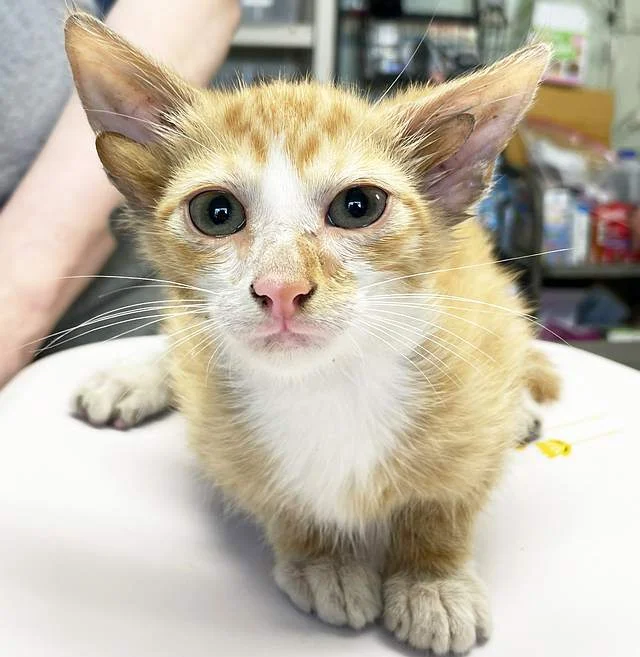Cat born with four ears due to genetic mutation

In Mount Juliet, Tennessee, a rare and intriguing phenomenon has caught the attention of biologists and animal lovers: a cat was born with four ears due to a genetic mutation. The protagonist of this story is Audio, an adorable feline who arrived at the True Rescue shelter along with his three siblings, and whose unique appearance quickly stood out.
Audio’s story began when, at just eight or nine weeks old, he was found in a very precarious situation. Together with his siblings, he was rescued from a sealed, unventilated box in Nashville, Tennessee. The situation was worrying, but a good Samaritan intervened, rescuing the kittens and taking them to the True Rescue shelter. The shelter staff soon realized that Audio had an exceptional feature: four ears.
The True Rescue shelter shared the news on their Facebook page, expressing their excitement and surprise: “This kitten arrived at our shelter today, along with his three siblings, and he has a rare genetic mutation that meant he was born with FOUR EARS!”

The genetic mutation that resulted in Audio’s four ears is a recessive condition that only affects the outer folds of the ears, known as pinnae. It is important to note that this mutation does not affect the functioning of the inner ear. Despite the absence of hearing problems, the mutation has its peculiarities.
Previous studies, such as the one published in the Journal of Heredity in 1957, indicate that cats with this mutation may have smaller eyes, a receding jaw and more lethargic behavior. However, these characteristics have not been observed across the board and may vary from one individual to another.
The True Rescue team described Audio as a sweet kitten who was grateful to have been rescued from the box where he was confined. “He’s very sweet and very grateful not to be trapped in that box,” they reported, emphasizing the feline’s resilience and affectionate personality. Audio has ears with forward and backward folds, which further accentuate his peculiar and charming appearance.
In recent years, several four-eared felines have taken center stage, including a Russian blue named Midas, who has amassed 344,000 followers on Instagram.
In addition to his physical appearance, Audio’s story raises interesting questions about genetics and the variability of mutations in animals. Although the mutation that resulted in the four ears is rare, it offers a unique insight into how small genetic changes can generate remarkable visual characteristics. Genetic science, which often deals with common variations and their implications, is challenged to explore these rare exceptions and better understand their causes and effects.
Audio’s case also highlights the importance of animal shelters and the need to intervene to save lives in risky situations. The dedication of people like the Good Samaritan who found the kittens and the True Rescue team who looked after them demonstrates the positive impact that compassion and action can have on the lives of animals in danger.
- See also: Chimpanzees are capable of speech?
In short, the story of Audio, the cat with four ears, is a fascinating example of how genetics can create surprising variations in nature. His plight not only enchants and intrigues, but also contributes to a better understanding of genetic mutations and their manifestations in animals. While Audio continues to adapt and explore the world with his unique characteristics, he also serves as a reminder of how much genetic diversity can enrich our lives and surprise us with its wonders.






